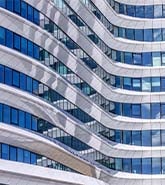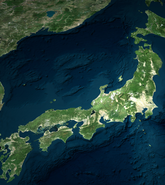TOKYO, Japan - May 02, 2018 RMS, the leading global risk modeling and analytics firm, announced today the release of its new Japan Earthquake and Tsunami High Definition (HD) model. RMS has collaborated with local experts, scientific agencies and insurers to develop a model that offers a more complete and detailed representation of earthquake and tsunami risk in Japan. The new model incorporates key research advancements from the 2017 Japan Seismic Hazard Maps, as well as lessons learned from the 2011 Tohoku Earthquake and the 2016 Kumamoto Earthquakes.
The 2011 Tohoku earthquake had an event magnitude of 9.0, which was significantly greater than expected based on Japan Seismic Hazard Maps published at the time. The Tohoku earthquake also initiated a series of devastating tsunami waves; highlighting the importance of sub-perils to the quantification of the financial risk of large offshore earthquakes.
Following the 2011 event, the Japanese Headquarters for Earthquake Research Promotion (HERP) oversaw extensive research studies on key subduction zones surrounding Japan and driving the seismic hazard and risk. The new model was developed through extensive evaluation of this research, so it provides a unique, robust point of view for earthquake hazard in Japan.
Leveraging detailed damage statistics and claims data from recent events, the new model assesses building performance due to ground shaking, tsunami inundation, fire following earthquake, liquefaction and landslides. These are all considered in terms of losses for buildings, contents, business interruption, industrial facilities and builders risk. The new model includes explicit modeling of post-event loss amplification.
The model captures the current local building codes and construction practices, which reflect the building stock distribution in Japan. Additionally, based on recent major liquefaction events in New Zealand, the liquefaction model framework has been redesigned using Japan-specific data to more accurately assess liquefaction risk at a local level.
The new HD model allows for better integration of models into pricing and underwriting to help improve risk selection. This innovation enables more precise selection and pricing of risks. The market-leading HD Financial model provides for flexible and transparent loss calculations and can assess Japan specific policies and terms (e.g. step policy). This powerful HD financial engine allows for an easier understanding of how losses are flowing through contracts which enables additional insight into contribution metrics and key drivers of risk.
Mohsen Rahnama, chief risk modeling officer, RMS said: “Our new model is more transparent and allows for a more realistic representation of claims processes and payout. The Japan Earthquake and Tsunami HD Model provides a comprehensive view of earthquake risk for Japan, with the flexibility to meet the requirements of the evolving catastrophe risk management market. Japan is one of the most seismically active areas in the world. Our new model offers a greater understanding of these risks, as well as improved risk differentiation, enabling better underwriting and risk management decision making.”






